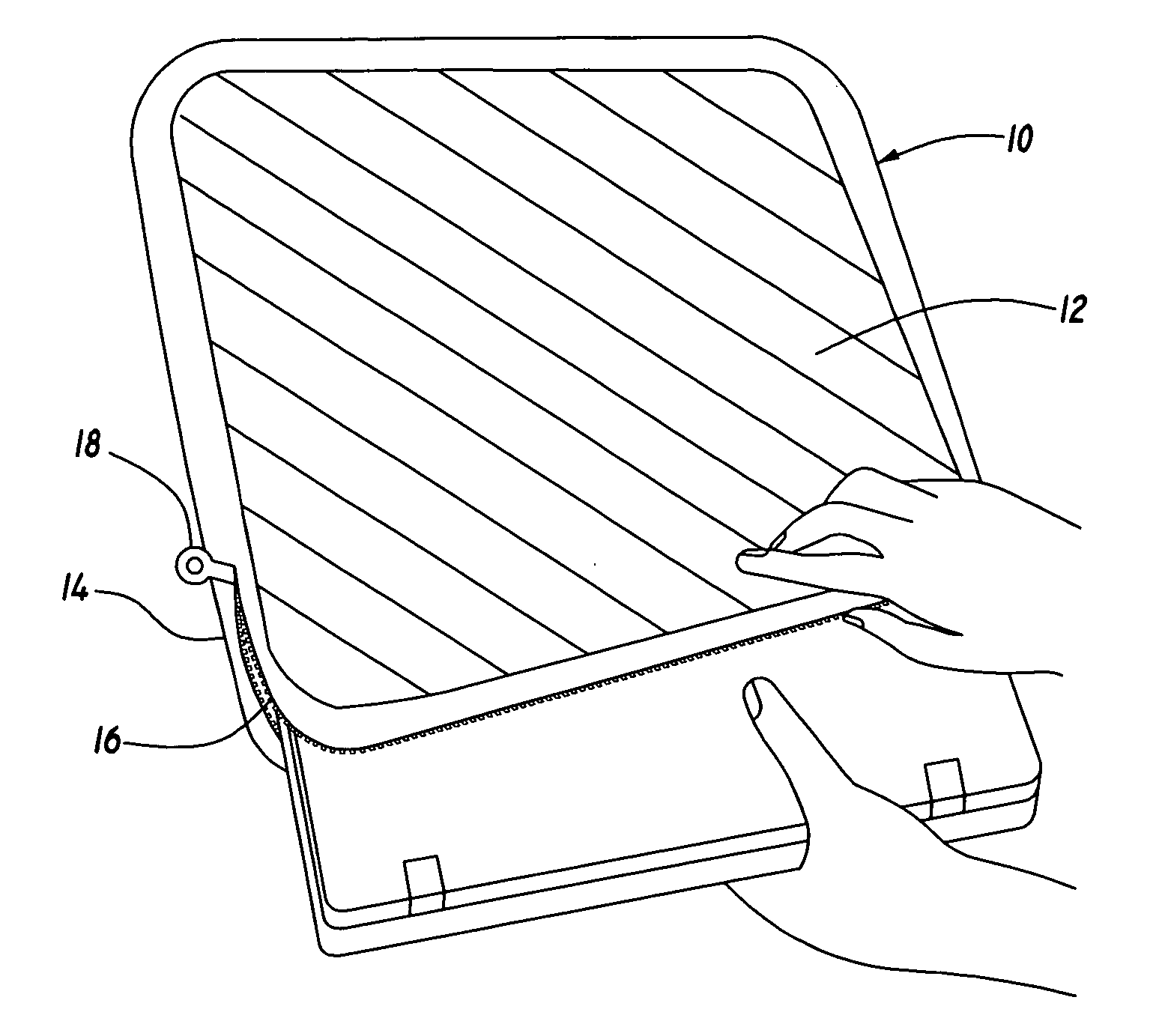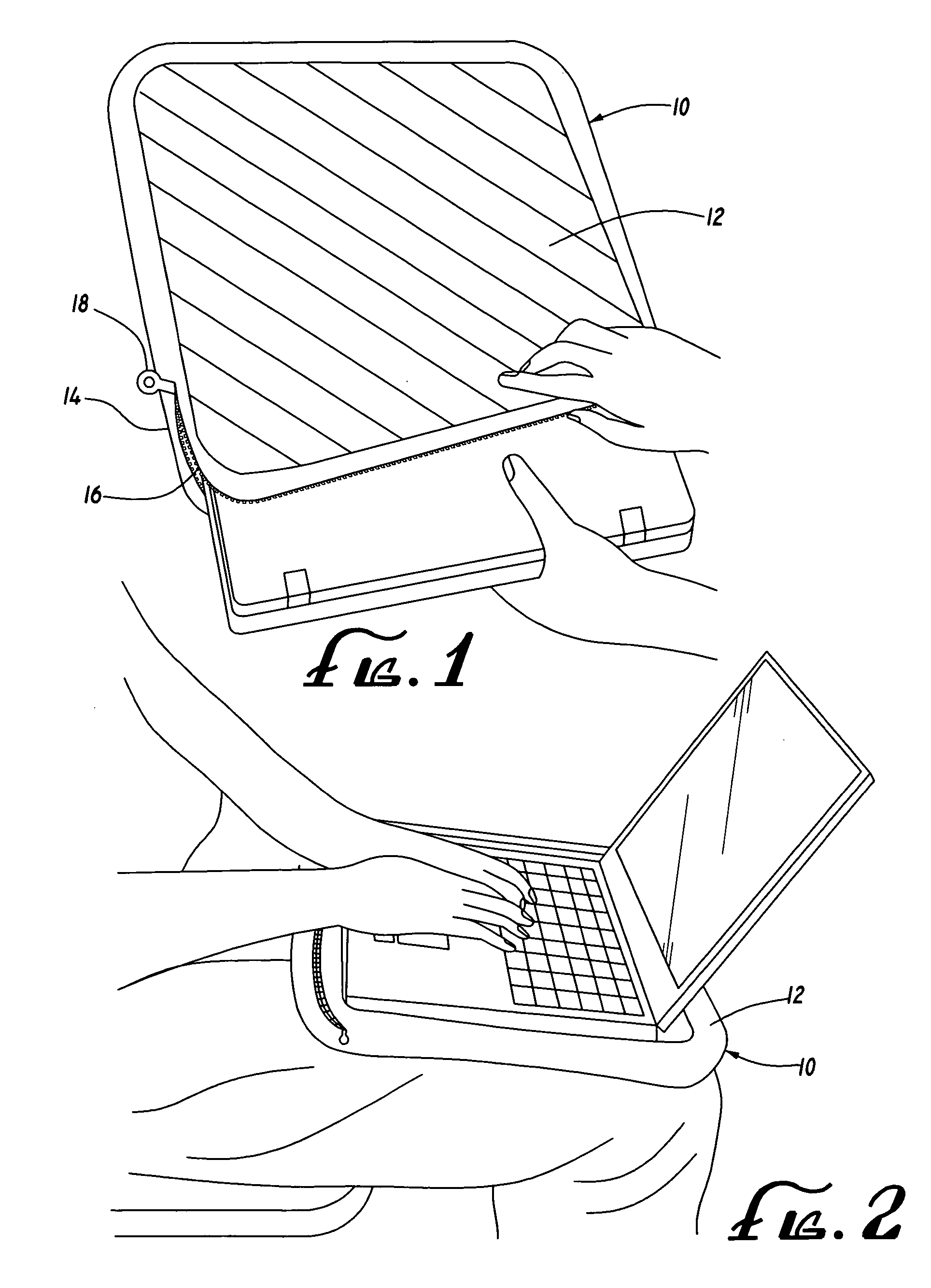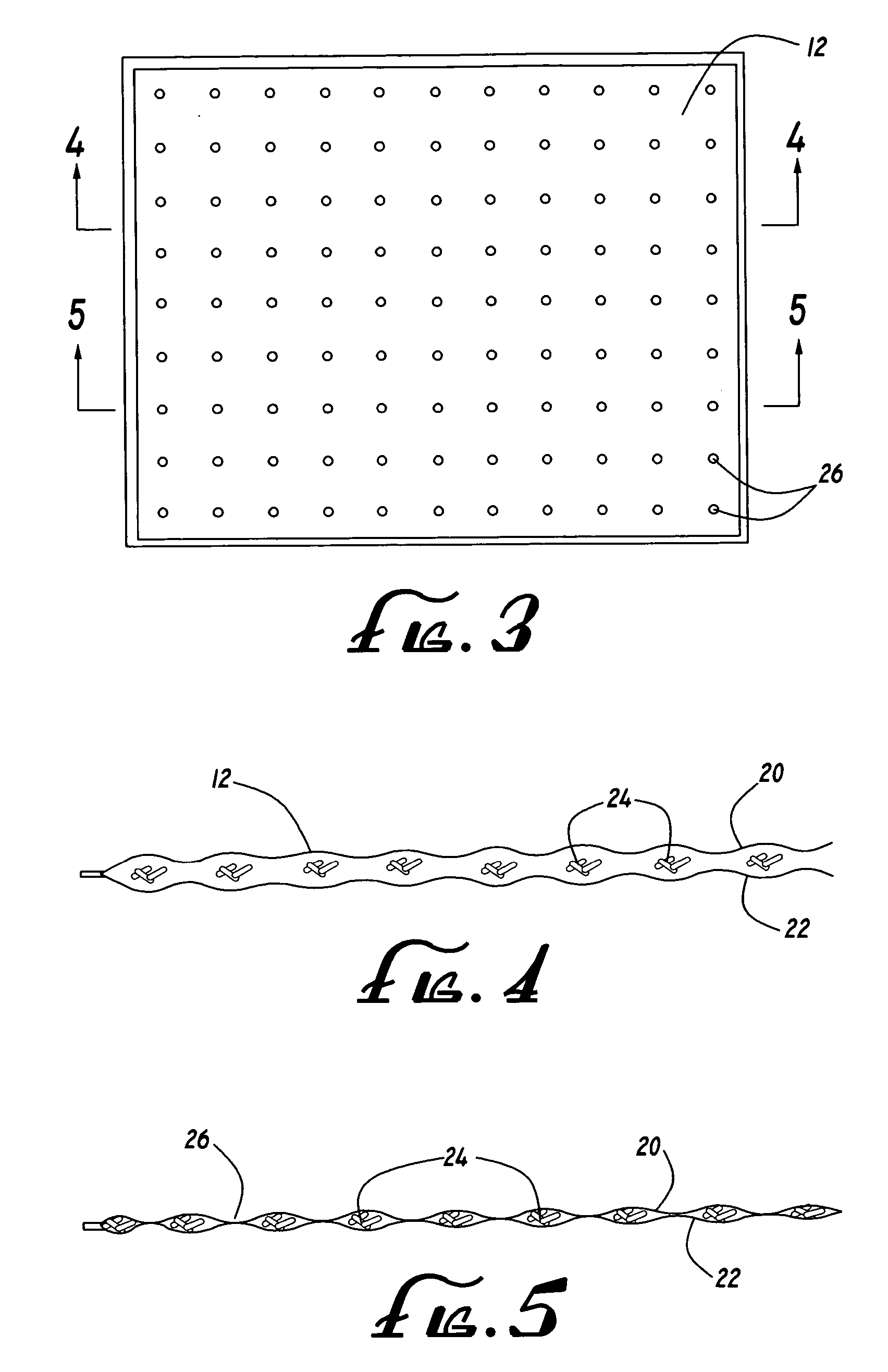Cooling pad for laptop computer
a laptop computer and cooling pad technology, applied in the field of cooling pads for laptop computers, can solve the problems of heat generation, short-lived benefits, and heat dissipation becoming a major challenge for computer manufacturers and consumers
- Summary
- Abstract
- Description
- Claims
- Application Information
AI Technical Summary
Benefits of technology
Problems solved by technology
Method used
Image
Examples
Embodiment Construction
)
[0023] First referring to FIG. 1, the preferred embodiment of the present invention may be described. The cooling pad 10 for a conventional laptop computer is in the form of a flexible sleeve having a top portion 12 and a bottom portion 14 connected together on three (3) sides. Across the fourth side is an opening 16 and a zipper 18 or some other fastening or closing means. The bottom portion 14 is made of a neoprene fabric although many other materials would also suffice. The sleeve may serve as the user's laptop bag or cover, or alternatively if the user already has a heavy-duty computer case the sleeve becomes a lightweight accessory that may be rolled up or folded and stowed in the case when not in use. A rigid board material (not shown) may be placed inside the sleeve to provide a stiffer structural support for the laptop if desired.
[0024] Now also referring to FIGS. 3-5, the top portion 12 of the preferred embodiment cooling pad 10 may be further described, which includes up...
PUM
 Login to View More
Login to View More Abstract
Description
Claims
Application Information
 Login to View More
Login to View More - R&D
- Intellectual Property
- Life Sciences
- Materials
- Tech Scout
- Unparalleled Data Quality
- Higher Quality Content
- 60% Fewer Hallucinations
Browse by: Latest US Patents, China's latest patents, Technical Efficacy Thesaurus, Application Domain, Technology Topic, Popular Technical Reports.
© 2025 PatSnap. All rights reserved.Legal|Privacy policy|Modern Slavery Act Transparency Statement|Sitemap|About US| Contact US: help@patsnap.com



